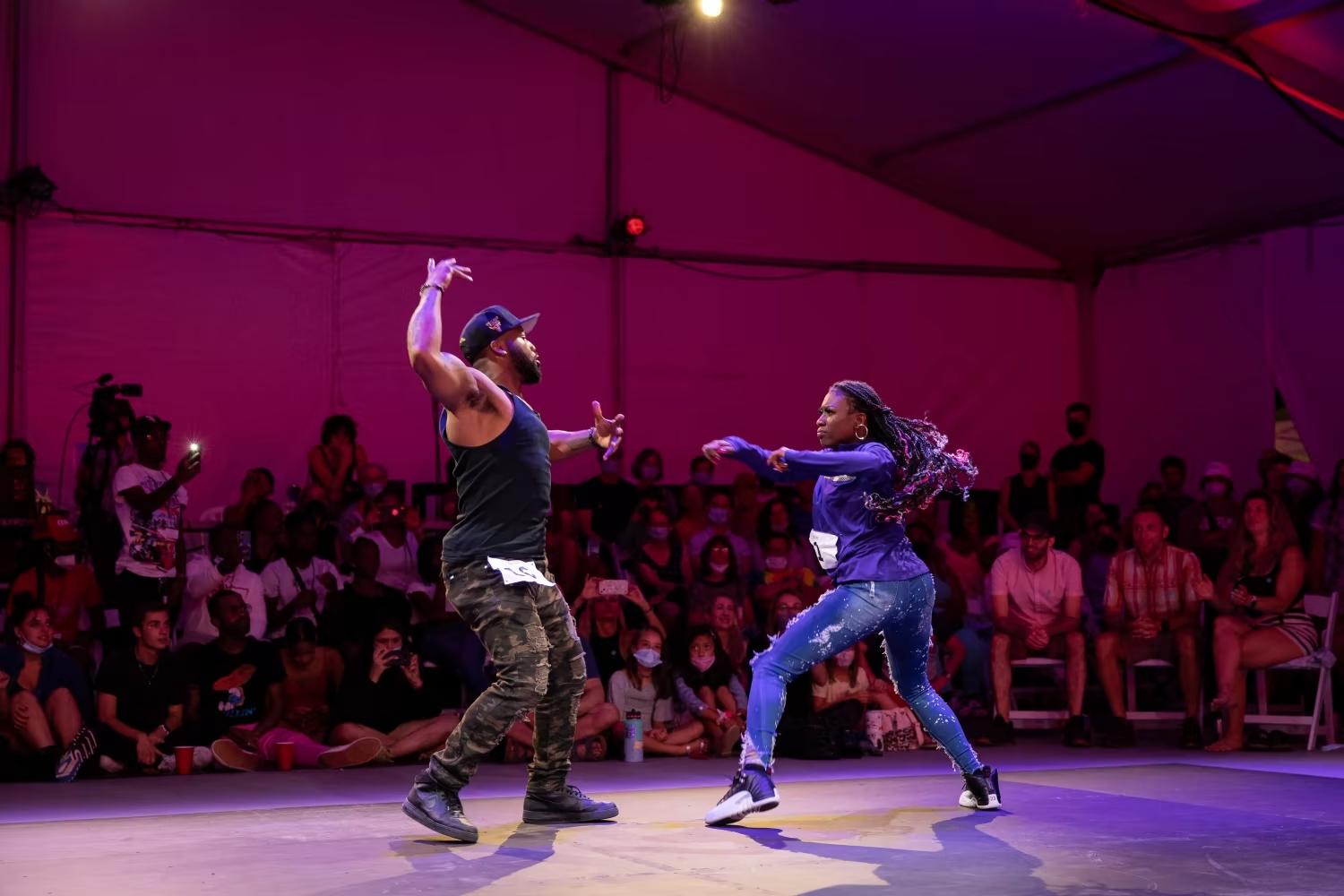Note: Video clip is available upon request. Audio clip is provided for assignment, but video is withheld for consent/anonymity reasons.
For this week’s critical play, I wanted to target a non-traditional debate game competitor that introduced unique mechanics of play. Luckily, a freestyle dance group I am a part of, FreeFlow, decided to introduce “Freestyle Prompt Dance Battles” for this week’s session. This game was played physically in EVGR C’s dance studio with a group of about 10 people, all of whom are a part of FreeFlow. This game is related to my group’s project as it has similar formal elements. Primarily, the objectives of both games are the same: win your round of debate by convincing the judge. Additionally, the mechanic of incorporating a prompt within the debate is also shared by both games. With the premise of a freestyle dance battle, the constraints of non-verbal communication as a form of expressive debate encourages players to be more creative and play with one another’s expressions, weaving a cohesive story throughout the battle and setting it apart from other games in this genre. The fluid nature of the game also meant that rules could be easily adapted to fit the needs of the players and audience, giving this game room to improve quickly.
Despite sharing formal elements, “Freestyle Prompt Dance Battles” would not generally be considered a debate game. Rather, most people would categorize it as an interpretive art. However, there are many aspects of play. For instance, there are judges who determine the winner of the round. The audience also has major influence throughout the battle, giving dancers inspiration for new moves and motivation to continue the flow of their dance. “Freestyle Prompt Dance Battles” has two main phases: the delivery of a prompt and the execution of the dance. For the first phase, the prompt can vary heavily. For example, on one round I received the prompt of emphasizing my belly button in my dance while in another round, I was given the premise of “Uber Driver” for my dance. The second phase demands the dancer to take the prompt and interpret it in their dance. Through this limitation of forcing the dancer to use their body, rather than their voice or pen and paper to communicate, the dancer is forced to be more expressive and empathetic. As such, the dancer also has to heavily buy into the magic circle given to them from the prompt. This narrative creation through dance requires a strategic use of space, timing, body language, and control to effectively communicate their interpretation. The dancer must become a storyteller, where each movement and gesture adds a chapter to their story, making the performance both dynamic and memorable. They must plan their flow and following moves but also remain flexible and responsive to the audience and judges around them. In this way, “Freestyle Prompt Dance Battles” transforms the concept of debate from a strictly verbal exchange to a multi-dimensional performance that combines creativity, physicality, and tactical play.
During this game, one of my most successful rounds was when I received the “Uber Driver” prompt. Initially, the prompt was confusing. “How does someone incorporate uber driving into a dance?” I thought. For the first few seconds, I listened to the flow of the music and tried to build from there. I threw in moves like the steering wheel and simulated myself in a car. Then, I chose to build upon that story by adding scenes like an accident and an arrest. The audience was extremely receptive to the added scenes, so I continued playing with that idea by introducing a prison escape and chase. All of this was conveyed without uttering a single word, and it was clearly interpreted by the judge who said “Oh, he’s finally free!” With a traditional debate game, I would have never built this story. The limitations of this game actually encouraged me to explore outside of my comfort zone to convey a message to the audience.
Interestingly, this game was used as a prototype for an event happening later this month. It used many elements of prototyping such as rapid, iterative testing and evaluation (RITE) to continually improve the game as we continued playing.
Overall, “Freestyle Prompt Dance Battles” fosters heightened creativity and narrative-driven experiences among participants through the limitations placed on the dancers, and the game’s flexibility allows for fast, direct changes of the game’s rules and procedures without breaking its other formal elements. From this game, I am hoping to incorporate its innovative methods of debate and prototyping into future iterations of “Character Contention.” Furthermore, I have learned that limitations can actually be beneficial to players, promoting a higher level of engagement and fun through storytelling. This exploration into the power of constraints within “Freestyle Prompt Dance Battles” has opened new avenues for creative expression within game design.



